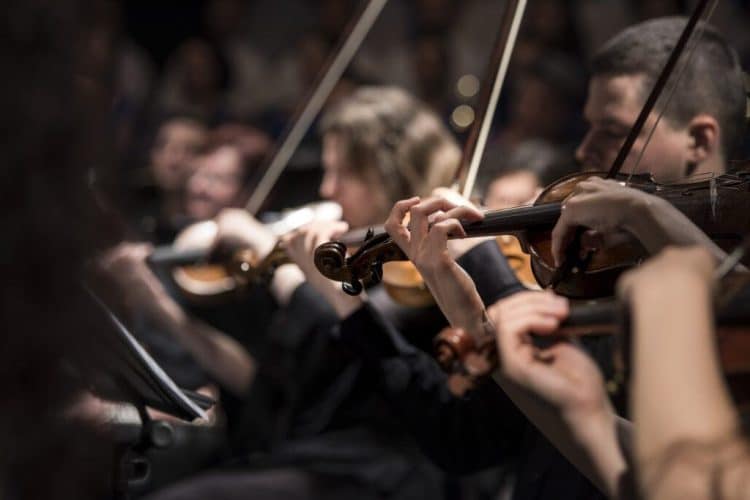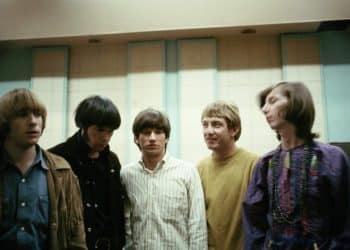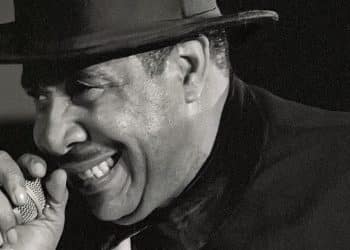Embark on a harmonious journey through the annals of musical brilliance as we delve into the timeless realm of the “15 Best Classical Music Pieces of All Time.” Classical music, with its rich history and emotive power, has woven itself into the fabric of human experience, transcending centuries and cultural shifts. In this curated selection, we traverse the landscapes of masterful compositions that have left an indelible mark on the collective soul of music enthusiasts worldwide. From the intricate tapestries of Bach’s counterpoint to the sweeping melodies of Beethoven’s symphonies, each piece unfolds like a musical odyssey, inviting listeners to surrender to the sublime.
These compositions, hailed as masterpieces, not only showcase the technical prowess of their creators but also serve as windows into the emotions and stories that resonate across time. Whether you are a seasoned aficionado or a novice eager to explore the treasures of classical music, this compilation promises a transformative experience. Join us in unraveling the mystique of these musical gems, each a testament to the enduring power of human creativity and the universal language that is classical music.
1. Symphony No. 5 by Ludwig van Beethoven
Beethoven’s Symphony No. 5 is a triumphant masterpiece that transcends time and resonates with the very essence of human emotion. Composed between 1804 and 1808, it stands as a symbol of Beethoven’s indomitable spirit in the face of personal adversity—his encroaching deafness. The iconic four-note motif, often likened to “fate knocking at the door,” sets the tone for a symphonic journey that navigates the depths of struggle and ultimately emerges into the brilliant light of victory.
From the commanding and unforgettable opening bars of the first movement to the delicate interplay of the second movement, the symphony is a rollercoaster of tension and release. The third movement dances with grace, providing a momentary respite before plunging into the exhilarating finale. The triumphant finale, with its powerful brass and strings, is a sonic manifestation of triumph over adversity, leaving an indelible mark on the listener’s soul.
Beethoven’s Symphony No. 5 is more than a musical composition; it’s a testament to the human spirit’s ability to overcome challenges and find joy in the midst of struggle.
2. The Four Seasons by Antonio Vivaldi
Vivaldi’s “The Four Seasons” is a breathtaking musical journey that mirrors the changing tapestry of nature with unparalleled artistry. Composed around 1720, this collection of violin concertos vividly captures the essence of each season, transcending the boundaries of classical music into a realm where sound and imagery intertwine.
In “Spring,” the opening concerto, Vivaldi paints a vibrant landscape with joyful melodies and lively rhythms, evoking the blossoming of nature. As we transition to “Summer,” the music intensifies, mirroring the heat of the sun and the energy of the season. “Autumn” brings a rich harvest of melodies, while “Winter” envelops listeners in a chilling embrace with its dramatic and icy tones.
The brilliance of “The Four Seasons” lies not only in Vivaldi’s technical prowess but also in his ability to tell a compelling story through music. The concertos are a celebration of life’s cyclical nature, a harmonious blend of virtuosity and emotional depth that has resonated through centuries. Whether it’s the chirping birds of spring or the crackling frost of winter, Vivaldi’s masterpiece remains a timeless ode to the beauty inherent in every season of existence.
3. Eine kleine Nachtmusik by Wolfgang Amadeus Mozart
Mozart’s “Eine kleine Nachtmusik,” or “A Little Night Music,” is a jewel of classical composition, a serenade that dances with effervescent charm. Crafted in 1787, this delightful serenade for strings is a testament to Mozart’s unparalleled gift for melody and precision.
The first movement, marked by its spirited allegro, invites listeners into a world of grace and elegance. The playful interactions between the strings create a sense of joyful conversation, akin to a lively soirée. The second movement, a Romanze, is a lyrical interlude that wraps the audience in a tender, emotive embrace. The minuet and trio that follow are a testament to Mozart’s mastery of form and balance, showcasing his ability to infuse even the most structured compositions with warmth and vivacity. The finale, a spirited rondo, brings the serenade to a brilliant conclusion, leaving an indelible imprint of joy.
“Eine kleine Nachtmusik” is a musical embodiment of the Austrian maestro’s genius—effortlessly blending sophistication with simplicity. Its enduring popularity lies in its ability to transport listeners to a realm where beauty and melody intertwine, creating a timeless sonic tapestry that continues to enchant audiences across the ages.
4. The Marriage of Figaro by Wolfgang Amadeus Mozart
Mozart’s “The Marriage of Figaro,” an opera buffa composed in 1786, is a comedic masterpiece that weaves together wit, romance, and social commentary. Set against the backdrop of a single chaotic day at the palace of Count Almaviva, the opera unfolds with a whirlwind of mistaken identities, clever schemes, and uproarious humor.
The overture, a vivacious prelude, sets the stage for the intricate web of relationships and intrigue that follows. As the plot unfolds, Mozart’s music becomes a character in itself, mirroring the characters’ emotions with unparalleled depth. From the flirtatious exchanges to the poignant arias expressing love and longing, every note contributes to the opera’s rich tapestry.
At its core, “The Marriage of Figaro” is a social satire, challenging the established order and celebrating the triumph of love over hierarchy. Mozart’s music serves as a dynamic force, propelling the narrative forward with its infectious energy and emotional resonance. The opera’s enduring popularity lies not only in its humor and charm but also in its timeless exploration of the complexities of human relationships. As the characters navigate the ups and downs of love and society, Mozart’s genius shines through, creating an operatic experience that is as relevant and delightful today as it was over two centuries ago.
5. Moonlight Sonata by Ludwig van Beethoven
Beethoven’s “Moonlight Sonata,” officially known as Piano Sonata No. 14 in C-sharp minor “Quasi una fantasia,” Op. 27, No. 2, is an introspective and hauntingly beautiful composition that transcends the boundaries of classical music. Composed in 1801, it remains one of Beethoven’s most beloved and iconic works.
The first movement, marked by the famous Adagio sostenuto, is an intimate and expressive exploration of emotion. The gentle, cascading notes create a serene yet melancholic atmosphere, earning the sonata its “Moonlight” moniker. The second movement, Allegretto, introduces a contrasting rhythm, providing a sense of respite and hope within the overall contemplative mood. The final movement, marked Presto agitato, bursts forth with passionate intensity, bringing the sonata to a powerful and dramatic conclusion.
The “Moonlight Sonata” is a testament to Beethoven’s ability to convey profound emotion through music. Its enduring appeal lies in its ability to evoke a range of feelings, from introspection to tumultuous passion, making it a timeless and universal piece that resonates with listeners across centuries. Whether experienced in a concert hall or through headphones in a quiet room, the “Moonlight Sonata” remains a poignant and evocative journey into the depths of human emotion.
6. Ride of the Valkyries by Richard Wagner
Wagner’s “Ride of the Valkyries,” an exhilarating excerpt from his opera “Die Walküre,” is a musical tour de force that gallops with unbridled energy and intensity. Composed in the mid-19th century as part of his monumental “Ring Cycle,” the piece is a dynamic showcase of Valkyries—warrior maidens—flying through the air, gathering the souls of fallen heroes for their mythical ride to Valhalla.
From the thunderous opening of brass and percussion, the music charges forward like a cavalry on a celestial battlefield. The iconic brass fanfare, known the world over, is a call to action, creating a sense of urgency and grandeur. The strings add a layer of tension, propelling the music forward with relentless momentum. As the Valkyries swoop in, the music reaches a climactic peak, capturing the essence of the dramatic and heroic narrative.
“Ride of the Valkyries” is not just a piece of music; it’s an auditory spectacle that has transcended its operatic origins to become a cultural phenomenon. Its dynamic and cinematic quality has made it a staple in popular culture, frequently used in films, commercials, and other media to convey a sense of epic adventure and triumph. Wagner’s musical prowess in this piece lies in its ability to stir the soul, ignite the imagination, and transport listeners to a realm where myth and music collide in a glorious symphony of power and valor.
7. Canon in D by Johann Pachelbel
Pachelbel’s “Canon in D” is a timeless and enchanting piece that weaves a delicate tapestry of harmony and beauty. Composed in the late 17th century, it stands as one of the most recognizable and enduring works of the Baroque era.
The piece begins with a simple and elegant three-part canon, where each voice enters one after another, creating a mesmerizing layering effect. The gentle progression of chords, accompanied by a soothing melody, imparts a sense of serenity and grace. The repetition and subtle variations in the musical theme contribute to the piece’s hypnotic charm, making it a favorite for weddings, ceremonies, and moments of quiet reflection.
“Canon in D” is a testament to Pachelbel’s mastery of counterpoint and his ability to create profound beauty through simplicity. Its enduring popularity can be attributed to the piece’s universal appeal—it transcends time and culture, resonating with listeners on a deeply emotional level. Whether played by a full orchestra, a small ensemble, or even on a single instrument, the “Canon in D” continues to captivate audiences and evoke a sense of timeless elegance and tranquility.
8. William Tell Overture by Gioachino Rossini
Rossini’s “William Tell Overture” is a musical rollercoaster that gallops through a landscape of drama, heroism, and pastoral beauty. Composed in 1829 as part of his opera “William Tell,” the overture has become one of the most iconic and recognizable pieces in the classical repertoire.
The overture opens with the famous Lone Ranger theme, a triumphant fanfare that immediately captures the listener’s attention. The energetic and rhythmic section that follows depicts a storm, with swirling strings and thunderous percussion. The pastoral section, featuring the serene English horn melody, transports the listener to the Swiss countryside.
The overture climaxes with the exhilarating “March of the Swiss Soldiers,” a musical call to arms that builds to a thrilling crescendo. The finale is a tour de force, showcasing Rossini’s flair for orchestration and his ability to create a vivid sonic spectacle.
“William Tell Overture” is a masterclass in musical storytelling, with its ability to evoke a range of emotions—from the excitement of a chase to the tranquility of nature. Its enduring popularity is a testament to Rossini’s genius and the timeless appeal of this dynamic and evocative composition. Whether heard in a concert hall, on film, or as the theme to a classic TV show, the “William Tell Overture” continues to captivate and inspire audiences worldwide.
9. Flight of the Bumblebee by Nikolai Rimsky-Korsakov
Rimsky-Korsakov’s “Flight of the Bumblebee” is a musical whirlwind that flutters and darts with astonishing speed and agility. Originally composed as an orchestral interlude for his opera “The Tale of Tsar Saltan” in 1899–1900, the piece has since taken on a life of its own as a showcase for virtuosic instrumentalists.
The frenetic and buzzing melody, played primarily by the strings, mimics the flight of a bumblebee with remarkable precision. The piece is a technical tour de force, challenging performers to navigate its rapid passages and intricate ornamentation with agility and finesse. Despite its brevity, “Flight of the Bumblebee” leaves a lasting impression, not only for its sheer speed but also for its playful and whimsical character.
Beyond its technical challenges, the piece has become a popular and recognizable musical excerpt, often used in various forms of media to convey a sense of speed, chaos, or lighthearted mischief. Rimsky-Korsakov’s musical depiction of a bumblebee in flight continues to captivate audiences with its sheer virtuosity and delightful musical imagery, making it a staple in the repertoire of many accomplished instrumentalists.
10. Adagio for Strings by Samuel Barber
Samuel Barber’s “Adagio for Strings” is a poignant and emotionally charged composition that has the power to stir the depths of the soul. Originally the second movement of his String Quartet, Op. 11, Barber later arranged it for string orchestra in 1936, and it has since become one of the most iconic and revered pieces in the classical repertoire.
The “Adagio for Strings” opens with a simple, yet profoundly moving, melodic line that unfolds with a sense of solemnity and introspection. The slow and deliberate pace, coupled with the expressive richness of the strings, creates a hauntingly beautiful atmosphere. As the music builds, it reaches a cathartic climax, releasing a surge of emotion that resonates with listeners on a visceral level.
Barber’s composition has a universal and timeless quality, its emotional depth transcending cultural and temporal boundaries. The “Adagio for Strings” has found its way into various contexts, from solemn ceremonies to film soundtracks, where its evocative power enhances the emotional impact of visual narratives.
The enduring appeal of the “Adagio for Strings” lies in its ability to convey a profound sense of human emotion—grief, yearning, and hope—through the pure and emotive language of music. It stands as a testament to the timeless beauty and emotional resonance that can be achieved through the artful combination of melody, harmony, and orchestration.
11. Brandenburg Concertos by J.S. Bach
Bach’s Brandenburg Concertos are a vibrant collection of six instrumental masterpieces that showcase the composer’s ingenuity and command of musical form. Composed around 1721, these concertos were dedicated to Christian Ludwig, the Margrave of Brandenburg.
Each concerto within the set explores different combinations of instruments and musical textures, creating a diverse and rich tapestry of sound. From the exuberant and celebratory opening of the first concerto to the intricate counterpoint and dance-like rhythms of the others, Bach’s ingenuity shines through.
The concertos are a testament to Bach’s ability to experiment with instrumental timbres, exploiting the unique qualities of each instrument. The sheer brilliance of the Brandenburg Concertos lies not only in their technical complexity but also in their joyous and exuberant spirit.
Whether it’s the majestic brass in the second concerto, the lyrical warmth of the strings in the third, or the playful dialogue between instruments in the sixth, each concerto offers a distinct musical experience. Bach’s Brandenburg Concertos continue to captivate audiences with their timeless beauty, serving as a testament to the enduring genius of one of classical music’s greatest composers.
12. Swan Lake by Pyotr Ilyich Tchaikovsky
Tchaikovsky’s “Swan Lake” is a balletic masterpiece that enchants with its timeless tale of love, magic, and tragedy. Composed in 1875–76, the ballet’s sweeping melodies and evocative orchestrations have made it a cornerstone of classical repertoire.
The story unfolds around Princess Odette, cursed to be a swan by day and human only at night, and Prince Siegfried, whose love must break the curse. The ballet’s iconic theme, particularly the delicate and haunting “Swan Theme,” captures the ethereal beauty of Odette and the melancholy of her predicament.
Tchaikovsky’s score is a triumph of emotion and atmosphere, from the regal splendor of the court scenes to the mysterious allure of the enchanted lake. The famous “Dance of the Swans” showcases the grace and precision of the dancers, while the dramatic “Black Swan Pas de Deux” adds a layer of intrigue and passion.
“Swan Lake” is a testament to Tchaikovsky’s ability to infuse classical compositions with narrative depth and emotional resonance. Its enduring popularity stems from the seamless marriage of captivating storytelling and breathtaking music, making it a timeless classic that continues to enthrall audiences worldwide.
13. Nessun dorma by Giacomo Puccini
Giacomo Puccini’s “Nessun dorma” is a poignant and powerful aria that emerges as the emotional centerpiece of his opera “Turandot.” Composed in 1926, the aria is delivered by the opera’s protagonist, Prince Calaf, as he expresses his unwavering determination to win the heart of the icy Princess Turandot.
The title, “Nessun dorma,” translates to “None shall sleep,” and the aria’s intensity is reflected in its lyrics. Calaf declares that none shall sleep until he solves Turandot’s riddles and wins her love. The soaring and triumphant melody, accompanied by a lush orchestral backdrop, captures the character’s passion and resolve.
The aria gained international fame beyond the opera stage, particularly through Luciano Pavarotti’s iconic performances. Puccini’s masterful composition, combined with the tenor’s emotive delivery, has turned “Nessun dorma” into a crossover hit, transcending the boundaries of classical opera and finding a place in popular culture.
Whether experienced within the grandeur of the opera house or through the emotive rendition of a world-class tenor, “Nessun dorma” remains a testament to Puccini’s ability to evoke deep emotions through his music, making it a timeless and universally appreciated piece.
14. Nuages gris by Franz Liszt
Franz Liszt’s “Nuages gris,” or “Gray Clouds,” is a haunting and introspective piano composition that stands as a departure from his more virtuosic and flamboyant works. Composed in 1881, this piece reflects a more contemplative and experimental side of Liszt’s later period.
“Nuages gris” unfolds with a melancholic and subdued atmosphere, its sparse and dissonant chords creating a sense of ambiguity and introspection. The title aptly captures the essence of the music—a depiction of gray clouds hanging heavily in the emotional sky. Liszt’s harmonic language in this piece is ahead of its time, hinting at the chromaticism and ambiguity that would become characteristic of 20th-century music.
In contrast to Liszt’s bombastic and technically demanding compositions, “Nuages gris” showcases a more restrained and nuanced approach. The piece invites listeners into a world of subtle shades and emotions, where the piano becomes a vehicle for introspective expression rather than virtuosic display.
“Nuages gris” remains a testament to Liszt’s ability to evolve as a composer and push the boundaries of musical expression. Its introspective beauty has made it a noteworthy and unique addition to the piano repertoire, offering a glimpse into the quieter, contemplative side of one of the Romantic era’s most dynamic figures.
15. Gymnopédies by Erik Satie
Erik Satie’s “Gymnopédies” are a set of three piano compositions that exude a tranquil and dreamlike quality. Composed between 1888 and 1890, these pieces are a departure from the Romantic excesses of the time, embodying Satie’s concept of “furniture music” or “musique d’ameublement.”
The Gymnopédies are characterized by their spare and gentle melodies, accompanied by subtle harmonies and an overall sense of calmness. The name “Gymnopédies” refers to ancient Greek festivals where athletes would perform in the nude, and Satie’s choice of title reflects his desire to evoke a sense of simplicity and austerity in the music.
Each Gymnopédie possesses a distinct character while maintaining an overarching mood of serenity. The repetitive and hypnotic nature of the compositions creates a meditative atmosphere, inviting listeners into a tranquil and introspective space.
Satie’s Gymnopédies have become some of his most beloved and recognizable works, appreciated for their understated beauty and atmospheric quality. Their influence extends beyond classical music, finding a place in various artistic realms and serving as a precursor to ambient and minimalist genres. The Gymnopédies stand as a testament to Satie’s avant-garde spirit and his ability to create music that transcends conventional boundaries.









